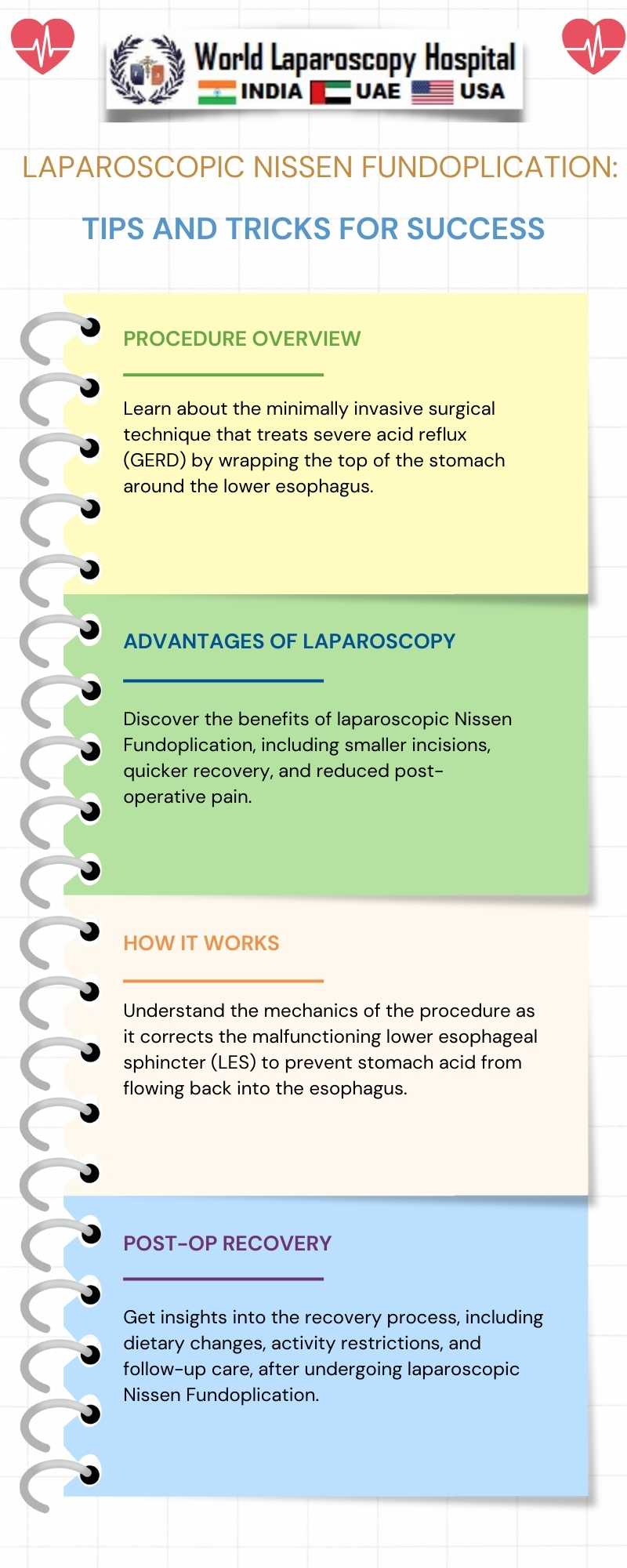Introduction
Gastroesophageal reflux disease (GERD) is a common gastrointestinal disorder that affects millions of individuals worldwide. It can lead to significant discomfort and have a negative impact on a patient's quality of life. Laparoscopic Nissen Fundoplication is a well-established surgical procedure for the management of GERD. However, the success of this procedure relies heavily on careful patient selection and consideration of various surgical factors. In this article, we will explore the critical aspects of patient selection and surgical considerations in Laparoscopic Nissen Fundoplication.

I. Patient Selection
1.1. Diagnosis and Evaluation
The first step in patient selection for Laparoscopic Nissen Fundoplication is a thorough diagnosis and evaluation of GERD. This includes assessing the patient's symptoms, medical history, and the severity of reflux symptoms. Diagnostic tests such as upper endoscopy, esophageal pH monitoring, and barium swallow studies can provide valuable information.
1.2. Failure of Medical Management
Patients being considered for Laparoscopic Nissen Fundoplication should have documented failure of conservative treatments, such as lifestyle modifications and medications. It's essential to establish that non-surgical interventions have not provided adequate relief.
1.3. Absence of Significant Esophageal Dysmotility
Patients with significant esophageal dysmotility, such as achalasia or severe esophageal motility disorders, may not be suitable candidates for Laparoscopic Nissen Fundoplication. Careful evaluation of esophageal motility is crucial to prevent postoperative complications.
1.4. Obesity and BMI Considerations
Obesity is a common risk factor for GERD. However, the body mass index (BMI) of a patient must be considered. Extremely obese individuals may benefit more from weight loss surgery before considering fundoplication.
1.5. Psychological Evaluation
A psychological assessment may be necessary for patients with unrealistic expectations or significant anxiety related to surgery. Addressing these issues before the procedure can improve postoperative outcomes.
II. Surgical Considerations
2.1. Preoperative Workup
Before proceeding with Laparoscopic Nissen Fundoplication, a comprehensive preoperative workup is essential. This includes a detailed assessment of the patient's overall health, comorbidities, and any medications they may be taking. Any underlying medical conditions should be optimized before surgery.
2.2. Surgical Technique
The laparoscopic approach to Nissen Fundoplication is minimally invasive and has become the preferred method in many cases. The surgeon should be experienced in laparoscopic techniques and familiar with the nuances of the procedure. Key steps in the surgery include hiatal dissection, creation of the fundoplication wrap, and securing it in place.
2.3. Hiatal Hernia Management
Many patients with GERD have a hiatal hernia, which must be addressed during the procedure. The surgeon should carefully assess the size of the hernia and decide on the appropriate repair technique, which may involve reduction of the hernia sac and crural closure.
2.4. Fundoplication Tension
Achieving the right tension in the fundoplication wrap is crucial for preventing postoperative complications. Over-tightening can lead to dysphagia, while under-tightening may result in persistent reflux. Surgeons must strike a delicate balance during the procedure.
2.5. Postoperative Care and Complication Management
Postoperative care is essential for a successful outcome. Patients should be educated about dietary modifications, activity restrictions, and potential complications. Surgeons should be vigilant in monitoring patients for early and late complications, such as dysphagia, gas bloat syndrome, and wrap failure.
III. Outcomes and Follow-up
3.1. Short-term and Long-term Outcomes
Patients who undergo Laparoscopic Nissen Fundoplication can experience significant relief from GERD symptoms. The article will discuss the short-term outcomes in terms of symptom relief and quality of life improvement, as well as the long-term durability of the procedure.
3.2. Follow-up and Surveillance
Follow-up appointments are essential to monitor the patient's progress and address any concerns. Periodic surveillance may include endoscopic evaluations to assess the integrity of the fundoplication and ensure it is functioning correctly.
Conclusion
Laparoscopic Nissen Fundoplication is a valuable surgical option for patients suffering from GERD, but its success depends on careful patient selection and surgical considerations. By diagnosing GERD accurately, evaluating patients thoroughly, and performing the procedure with precision, surgeons can provide long-lasting relief to those in need. It is crucial for healthcare professionals to stay updated on the latest research and advancements in the field to continue improving patient outcomes in the management of GERD through Laparoscopic Nissen Fundoplication.